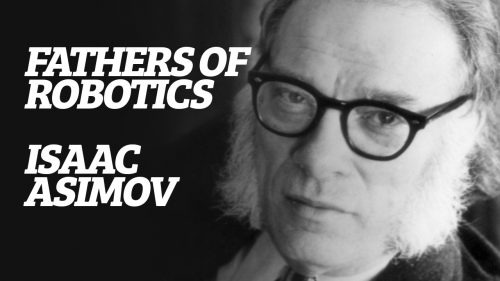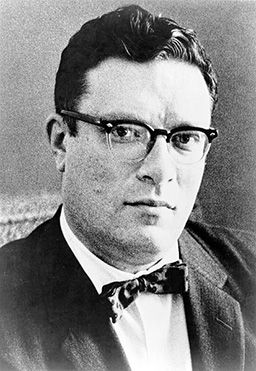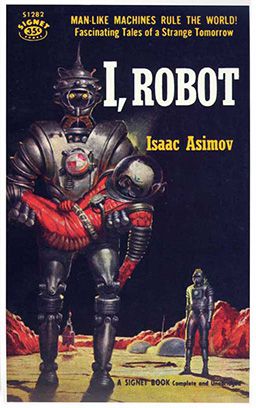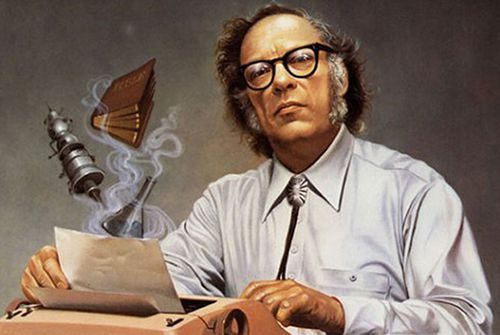Fathers of Robotics: Isaac Asimov

This is the first part of three in our series "Fathers of Robotics". With robots getting more and more present in our daily lives, it's interesting to look back and get to know the great minds who first conceived a future where machines would help humans.
Isaac Asimov
Born Isaak Ozimov in Petrovichi (Now Smolensk, Russia) between October 4, 1919 and January 2, 1920. He was a prolific American writer whose bibliography counts more than 500 books. He was among the "Big Three" science fiction writers during his lifetime with Robert A. Heinlein and Arthur C. Clarke. He is considered one of the fathers of robotics with his Robot series. Growing up in Brooklyn, NY he demonstrated early the signs of a bright mind and an appetite for reading. Thanks to his parents store which also sold newspapers and magazines, he was supplied with an unending source of reading material. At the age of 11, he started writing his own stories and was selling them before being 19 years old. Pursuing a degree in chemistry,he earned his Ph.D. in 1948. He eventually became a professor before switching to full-time writing in 1958. His most famous pieces of work are the Foundation and Robot series.The Robot Series
In one of his most famous series, made of 38 short stories and 5 novels, Asimov built a universe and unified history promoting the themes of the interaction of humans, robots, and morality. Starting with "I, Robot" in 1950, the series would see the birth of two important concepts : positronic robots and robotics. Indeed, the Oxford English Dictionary credits Asimov for inventing both these words. While the Robot word originated from the Karel Čapek's play "R.U.R" in 1920, the term Robotics only appeared in 1941 in "Liar!" (published in "Astounding Science Fiction"). But not only Asimov coined the term, he also wrote the essential rules of this field of science.The Three Laws of Robotics
They are also known as the Thee Laws or Asimov's Laws. They define the ground principles for modern robotics. While being introduced in his 1942 short story "Runaround", they have been hinted at during various stories:- A robot may not injure a human being or, through inaction, allow a human being to come to harm.
- A robot must obey the orders given it by human beings except where such orders would conflict with the First Law.
- A robot must protect its own existence as long as such protection does not conflict with the First or Second Laws
- A robot may not harm humanity, or, by inaction, allow humanity to come to harm.
Defining robotics and opening our eyes
Indeed, Asimov has done more than just creating robotics and defining its rules. He also opened our eyes on what could be the future of technology, but also of humanity. His care for details and for plausible science-fiction, as well as the choice to offer a unified universe in his series, turned his work into pillars of modern science-fiction. Not mentioning the simple volume of stories written during his lifetime, making him one of the most prolific author ever. His books influenced a whole span of technology, people (Paul Krugman, holder of a Nobel Prize, stated Asimov's work inspired him to become an economist), and so much more. Without Asimov, our world would be very different, and robotics would surely not be where it is today. He fully deserves his place among the fathers of robotics.Thanks for helping to keep our community civil!
Notify staff privately
You flagged this as spam. Undo flag.Flag Post
It's Spam
This post is an advertisement, or vandalism. It is not useful or relevant to the current topic.
This post is an advertisement, or vandalism. It is not useful or relevant to the current topic.
You flagged this as spam. Undo flag.Flag Post







